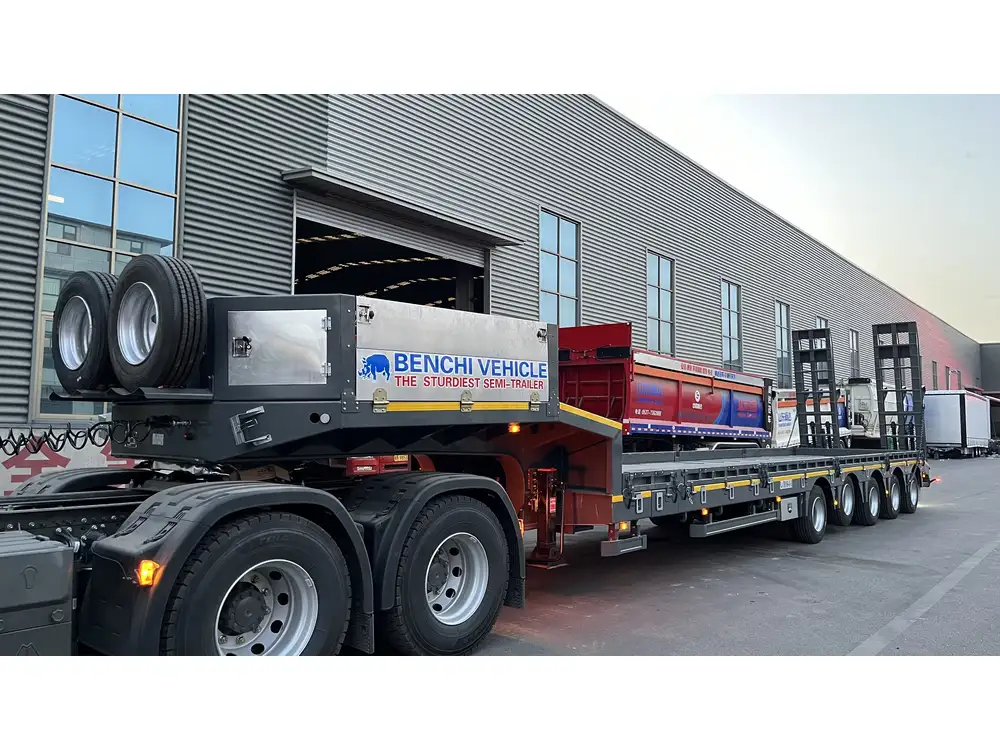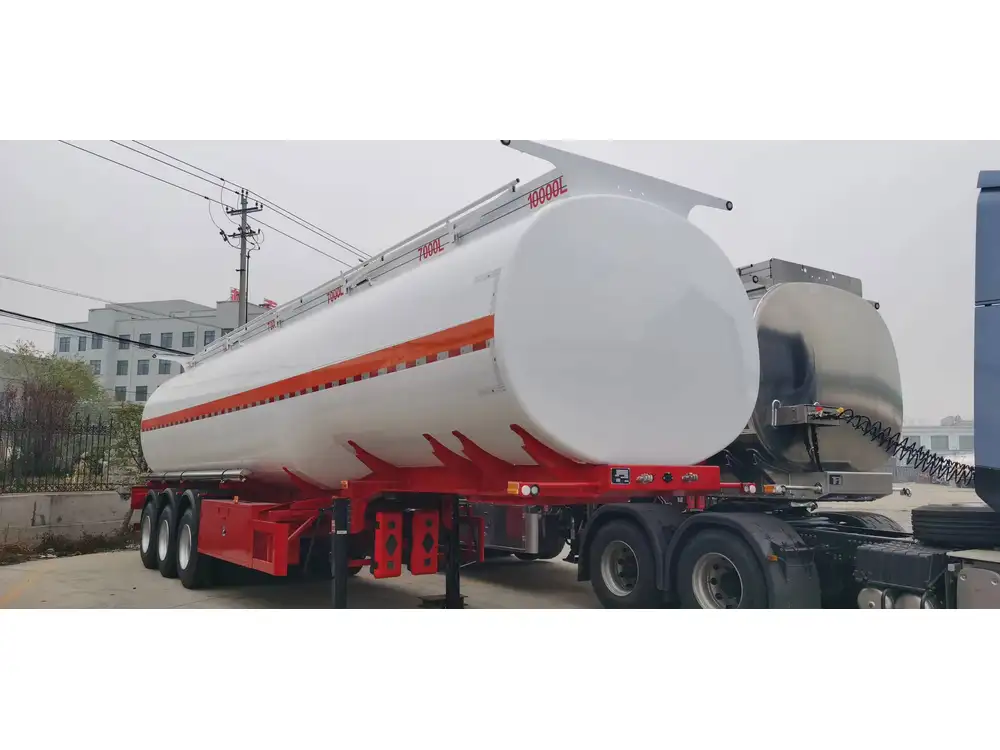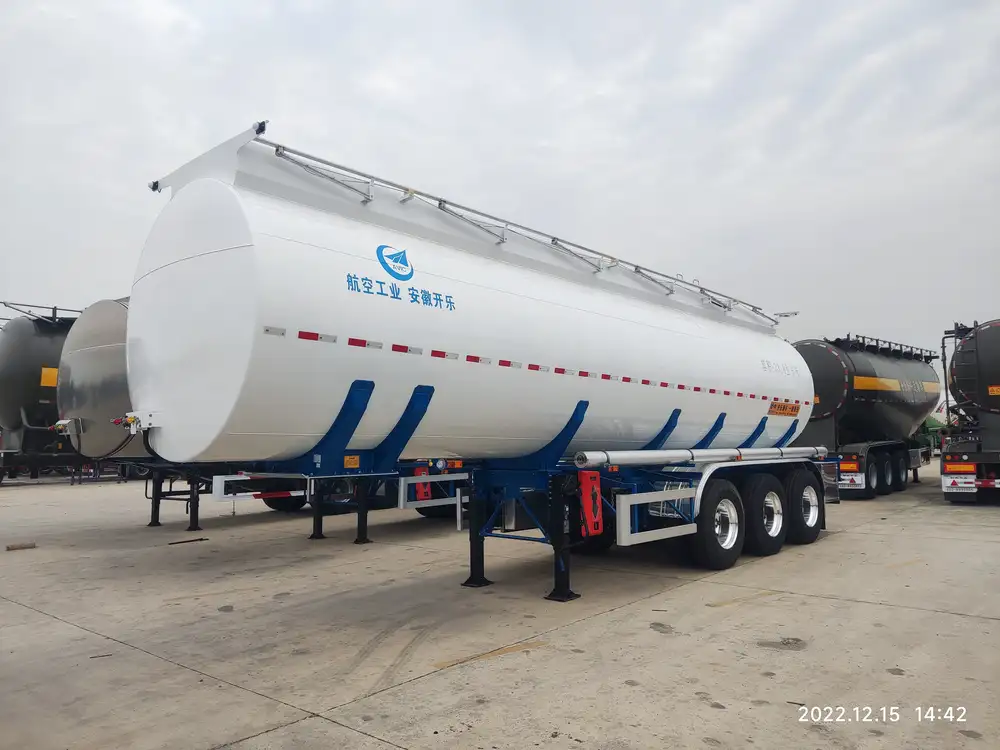Ensuring the safety of your personnel and cargo during the unloading of flatbed trailers is paramount. At CarMax Vehicle, we specialize in manufacturing top-tier semi-trailers that not only meet industry standards but also prioritize safety and efficiency. This guide delves into the critical aspects of unloading flatbed trailers safely, offering step-by-step procedures, best practices, and essential safety measures to optimize your operations.
Table of Contents
- Understanding Flatbed Trailer Operations
- Pre-Unloading Preparations
- Vehicle Inspection
- Site Assessment
- Equipment Readiness
- Personal Protective Equipment (PPE) Requirements
- Safe Unloading Procedures
- Securing the Trailer
- Managing the Cargo
- Using Proper Lifting Techniques
- Dealing with Common Hazards
- Slips, Trips, and Falls
- Falling Objects
- Equipment Malfunctions
- Emergency Response Protocols
- Training and Certification
- Technology and Innovations in Trailer Safety
- Maintenance for Enhanced Safety
- Conclusion
- FAQs
Understanding Flatbed Trailer Operations
Flatbed trailers are versatile and widely used in transporting a variety of goods, ranging from construction materials to oversized machinery. Unlike enclosed trailers, flatbeds offer easy access to cargo, facilitating quicker loading and unloading processes. However, this openness also introduces unique safety challenges that must be meticulously managed to prevent accidents and ensure efficient operations.

Pre-Unloading Preparations
Before initiating the unloading process, thorough preparations are essential to establish a safe and organized environment.
Vehicle Inspection
Conduct a comprehensive inspection of the CarMax Vehicle flatbed trailer prior to unloading:
- Brakes and Tires: Ensure brakes are functioning correctly and tires are free from visible damage.
- Locking Mechanisms: Verify that all locking mechanisms are secure and operational.
- Suspension System: Check for any signs of wear or damage in the suspension system that could affect stability during unloading.
Site Assessment
Evaluate the unloading location to guarantee it meets safety standards:
- Ground Conditions: Ensure the unloading area is level, stable, and free from debris.
- Space Availability: Confirm there is ample space for maneuvering equipment and personnel.
- Environmental Factors: Assess weather conditions and prepare for adverse scenarios like rain or high winds.

Equipment Readiness
Ensure all equipment used in the unloading process is in optimal condition:
- Forklifts and Pallet Jacks: Inspect for functionality and safety features.
- Tie-Downs and Straps: Check for integrity and absence of wear that could compromise cargo stability.
- Safety Barriers and Signage: Position barriers and signs to delineate safe zones and inform personnel of potential hazards.
Personal Protective Equipment (PPE) Requirements
Proper PPE is crucial in safeguarding personnel during the unloading process. Essential PPE includes:
- Helmets: Protect against head injuries from falling objects.
- Gloves: Provide hand protection from sharp edges and rough surfaces.
- Safety Footwear: Ensure sturdy, slip-resistant boots to prevent foot injuries.
- High-Visibility Vests: Increase visibility in busy unloading zones.
- Eye Protection: Shield eyes from debris and splashes.
Safe Unloading Procedures
Implementing structured and methodical unloading procedures significantly reduces the risk of accidents.

Securing the Trailer
- Park on Level Ground: Position the trailer on a stable, flat surface to prevent tipping.
- Engage Parking Brakes: Activate the trailer’s parking brakes to ensure it remains stationary.
- Chock Wheels: Place wheel chocks to provide additional stability.
Managing the Cargo
- Assess Cargo Weight and Distribution: Understand the weight and placement of cargo to plan the unloading sequence.
- Remove Any Obstructions: Clear any items that may impede the unloading process.
- Use Proper Handling Equipment: Utilize forklifts, pallet jacks, or other appropriate equipment to move cargo safely.
Using Proper Lifting Techniques
- Plan the Lift: Determine the most efficient and safe path for moving cargo.
- Maintain Good Posture: Bend at the knees, not the waist, to avoid back strain.
- Lift with the Legs: Use leg muscles to lift, keeping the load close to the body to reduce strain.

Dealing with Common Hazards
Awareness and proactive management of potential hazards are essential components of unloading safety.
Slips, Trips, and Falls
- Maintain Cleanliness: Keep the unloading area free from spills and debris.
- Proper Lighting: Ensure adequate lighting to prevent missteps.
- Clear Pathways: Keep walkways unobstructed to facilitate safe movement.
Falling Objects
- Secure Loads Properly: Use appropriate tie-downs to prevent cargo from shifting or falling.
- Erect Safety Barriers: Install barriers to protect personnel from falling items.
- Avoid Overhanging Loads: Ensure cargo does not extend beyond the trailer to minimize fall risks.

Equipment Malfunctions
- Regular Maintenance: Schedule routine inspections and maintenance of all unloading equipment.
- Immediate Repairs: Address any equipment issues promptly to prevent malfunctions during operations.
- Operator Training: Ensure personnel are trained to recognize and respond to equipment faults.
Emergency Response Protocols
Establishing clear emergency response procedures enhances safety and preparedness.
- Develop an Emergency Plan: Outline steps for responding to accidents, fires, or equipment failures.
- Designate Emergency Exits: Clearly mark and keep accessible all emergency exits in the unloading area.
- First Aid Kits: Provide easily accessible first aid supplies and train personnel in basic first aid.
- Emergency Contacts: Display contact information for emergency services prominently in the unloading zone.
Training and Certification
Comprehensive training programs are indispensable in fostering a safety-conscious workforce.
- Safety Induction: Provide initial safety training for all new employees involved in unloading operations.
- Regular Refresher Courses: Conduct ongoing training sessions to reinforce safety protocols and introduce new practices.
- Certification Programs: Encourage personnel to obtain relevant safety certifications to enhance their skills and knowledge.

Technology and Innovations in Trailer Safety
Leveraging advanced technologies can significantly improve unloading safety and efficiency.
- Telematics Systems: Monitor trailer movements and cargo conditions in real-time to prevent accidents.
- Automated Loading Equipment: Utilize automated systems to reduce manual handling and associated risks.
- Safety Sensors: Install sensors that detect obstacles or unbalanced loads, alerting operators to potential hazards.
Maintenance for Enhanced Safety
Regular maintenance is crucial in preserving the integrity and safety of flatbed trailers.
- Scheduled Inspections: Implement a routine inspection schedule to identify and address wear and tear promptly.
- Component Replacement: Replace worn or damaged parts to maintain optimal trailer performance.
- Documentation: Keep detailed maintenance records to track the trailer’s condition and history, ensuring compliance with safety standards.
Conclusion
At CarMax Vehicle, we recognize that the safety of unloading flatbed trailers is a multifaceted endeavor requiring meticulous planning, proper equipment, and ongoing education. By adhering to the guidelines outlined in this comprehensive safety manual, you can significantly mitigate risks, protect your workforce, and ensure the seamless and secure handling of your cargo. Investing in safety not only safeguards lives but also enhances operational efficiency and fosters a culture of responsibility and excellence within your organization.

FAQs
1. What are the primary safety concerns when unloading a flatbed trailer?
The main safety concerns include slips, trips, and falls; falling objects; equipment malfunctions; and ensuring proper handling and distribution of cargo to prevent accidents and injuries.
2. How often should flatbed trailers be inspected for safety?
Flatbed trailers should undergo a thorough safety inspection before each unloading operation. Additionally, regular maintenance checks should be conducted weekly or monthly, depending on usage frequency, to ensure all components are in optimal condition.

3. What personal protective equipment (PPE) is essential for unloading flatbed trailers safely?
Essential PPE includes helmets, gloves, safety footwear, high-visibility vests, and eye protection. Depending on the specific unloading environment, additional protective gear such as knee pads or hearing protection may also be necessary.
4. How can technology enhance the safety of unloading flatbed trailers?
Technological advancements such as telematics systems, automated loading equipment, and safety sensors can monitor trailer movements, detect obstacles or unbalanced loads, and automate handling processes, thereby reducing manual errors and enhancing overall safety.
5. What training is required for personnel involved in unloading flatbed trailers?
Personnel should receive comprehensive safety induction training, regular refresher courses, and relevant safety certifications. Training should cover proper unloading techniques, equipment operation, hazard recognition, and emergency response protocols to ensure a well-prepared workforce.



